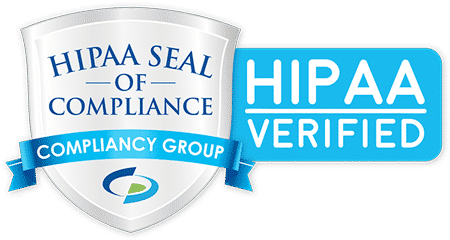…PAY OR PLAY
Companies with more than 50 employees that do not offer health insurance as a benefit, and have at least one full-time employee gets a subsidy from the federal government to purchase health insurance on his or her own, must pay a fee of $2,000 for every one of your full-time workers beginning 1-1-2014. (Accountants take note: you could subtract the first 30 of your employees from that assessment)
Pay or Play…example where you choose you’d rather pay the fine:
You have 100 employees and DO NOT offer medical insurance
1 of your employees gets a subsidy to purchase insurance from the exchange
You are fined $2,000 per year, per person who does not have insurance offered
You can subtract 30 employees from your count to calculate your fine
You are fined on 70 of your 100 people at $2,000 a person
Your annual cost is $140,000
Pay or Play…example where you choose NOT to pay the fine:
You have 100 employees and offer medical insurance
You offer a base plan and a couple of buy up options
Your base plan costs $350 per month for employee only
You pay for 50% of the base plan for Employee Only Premium and have your employees buy up to other options if they choose
You are able to write of your premium for State and Federal tax purposes
Your combined State + Federal tax bracket is 38%
Your annual cost is $130,200
Spelling out the math…
The BASE PLAN employee only premium = $350
50% of that is the employer’s responsibility = $175
All 100 of your employees take the plan so you pay 175 x 100 per month = $17,500
Annualized 17,500 x 12 = $210,000
At a State + Federal tax bracket of 38% you wind up with 210,000 x 0.62 =
Your annual cost is $130,200
So, after factoring in the tax treatment, not only is it nearly $10,000 per year cheaper for you to offer benefits but you avoid the soft dollar expenses also…
Consider for a second if you just pay the penalty, your company would also…
Force your employees to fend for themselves in the exchange and figure out plan differences
You cannot say you offer benefits during discussions of employee recruitment and retention
You burden your HR department with the need to understand the 100 different individual plans your employees have if anyone has claims questions
You forego the services of a broker to help your HR team and to advise you on the other fines and employer pitfalls
And, again, it’s costing you $10,000 more for your troubles!
The fine for not offering coverage is $2,000 per year per full time employee.
Even if you do offer benefits, you’re not entirely out of the woods yet with required benefits and keeping away from fines …just in case you thought my $175 employer contribution was too high.
Let’s take the same 100 employee group and walk through the provisions for the “Unaffordable Coverage”.
The fine for non-compliance is actually $3,000 per year, per person affected (not to exceed the would-be fine for not offering coverage at all) and is triggered by an employee receiving a subsidy to purchase coverage through the exchange.
First and foremost, for a plan to be considered “affordable” regardless of what you do to split the premium with an employee, the plan has to maintain an actuarial value of 60%.
In other words, you can’t get away with buying a cheapie plan that forces all of the costs of service onto the member with extra high co-pays or co-insurance rates (which is why we set the base plan at $350, not $150!).
Assuming your plan pays for at least 60% of covered health care expenses for a typical population, and then you need to look to how you set your premium split.
The cost for an employee’s premium cannot exceed 9.5% of his/her annual salary.
In the example from before where the employee’s cheapest option is $175 per month, the employee must be making an annual salary of at least $22,106 for this premium figure to be in compliance.
Assuming the employee works the average 40 hour work week, the lowest hourly rate a person could make working for 52 weeks a year is $10.63/hour for the company to still be in compliance.
Spelling out the math…
If an employee earns $22,106 per year then 9.5% of that is (22,106 x 0.095) $2,100.07.
If $2,100.07 is the most he/she can pay annually, that broken out monthly is (2,100.07 / 12) $175.01.
Thus your $175 is under the maximum allowable premium for this employee and you are complaint.
The fine for unaffordable coverage is $3,000 per year per person with “unaffordable coverage”
PPACA creates disclosure requirements to help plans and individuals better understand their current health plans as well as other coverage options that might be available. Under the statute, federal agencies were very specifically tasked with creating a model notice. It was to be in a font no less than 12-point and be no more than 4 pages long (front and back). The proposed rule is intended to help consumers make apples to apples comparisons of plan options. It is required to include an Easy to understand Summary of Benefits and Coverage (SBC) and a uniform glossary of terms commonly used in health insurance. The SBC will provide a “plain language” explanation of the plan options and will also give coverage samples for benefits provided for 2 common scenarios:
-Having a baby
-Managing Type 2 Diabetes
The rule DOES apply to Grandfathered plans and must be provided in the following instances:
-Initial Enrollment/application
-Renewal/re-enrollment
-Material change
-On request (as soon as possible but no more than 7 days later)
The SBC may be provided in paper or in electronic form, to be included with the Open Enrollment materials and must be given in “culturally and linguistically appropriate” manners, as well as made available in paper form upon request for both participants and beneficiaries (if at a different address). In the Self-Funded market, the plan sponsor takes on much more responsibility in drafting and distributing the SBC documents, however, in the fully insured market space, responsibility for the preparation of the SBC falls on the insurer with the plan sponsor responsible for the distribution.
Part of the SBC provision includes a requirement that plan sponsors provide a 60-day notice to participants of any material changes to be made. The requirement applies to changes made DURING the plan year. It does not apply to renewals of coverage or any modifications made as part of the renewal.
The fine is up to $1,000 per enrollee who does not
receive the SBC.
The IRS wants to emphasize this is for informational purposes only and does not cause excludable employer-provided health coverage to become taxable. The regulation includes federal, state and local government entities, churches and other religious organizations…even employers that are not subject to the COBRA continuation requirements.
The regulation states that employers must report the cost of all “applicable employer-sponsored coverage” and clearly says the cost of coverage must include BOTH the employer’s AND the employee’s share of the cost. The cost of coverage is to be reported in Box 12 of Form W-2, using code “DD.”
We are only talking about the medical premium amounts. This provision does not alter the rest of the W-2, you simply now insert a lump sum in box 12 with code DD for the medical premiums.
Methods to calculate the cost of coverage…
For Self-Funded groups, the “COBRA Applicable Method” under this method, the reportable cost equals the COBRA applicable premium (or a “good faith estimate” if the employer subsidizes, the ‘Modified COBRA Premium Method’)
For Fully Insured groups, the “Premium Charged Method” is best where the employer may use the actual premium charged by the insurer.
Interim guidance issued by the IRS in March 2011 provided relief for employers filing fewer than 250 W-2 forms until “further guidance is issued.”
The fine for failure to comply is $200 per form W-2, up to a maximum of $3 million.
These rules were already in place for self-insured plans but the reform bill extended requirements to fully insured groups as well, however, in December of 2010, fully insured plans were given an early Christmas present by the IRS and were informed they need not comply “until further notice.” According to the language of the bill, when it does go into effect, Grandfathered plans will be exempt and under these rules a plan may not discriminate in favor of highly compensated individuals on things like eligibility to participate in a plan or the premium co-share for a plan. Individuals are considered highly compensated if they’re:
One of the 5 highest paid officers of a company
A shareholder of more than 10%
One of the highest paid 25% of all employees
The fine for failure to comply is $100 per day, per individual discriminated against.
MLR and REBATES
A “medical loss ratio” or MLR is the ratio of dollars collected versus dollars spent on “medical care” and “quality improvement activities.” Under this regulation, Insurers must spend specified amounts of collected premium on “medical care and quality improvement activities” to avoid issuing any rebates.
Insurers must maintain a MLR of 80% in the small group and individual market, and 85% in the large group market. Plans will be reviewed on an annual basis and if they wind up outside of these permissible margins, Insurers must issue rebates. MLR calculations began in 2011, with the first round of rebates handed out in 2012…rebates must be issued by August 1st each year.
Rebates are based upon aggregated market data in each State and not upon a particular group health plan’s experience.
If you do receive a rebate, there are essentially 4 steps you need to take…
1. Determine the plan to which the rebate applies:
(e.g. is this for my HMO, my PPO or my HSA?
2. Determine the portion of the rebate that relates to employee contributions:
(e.g. The employer pays 80% of the premium for that plan, thus will rebate 20% to employees)
3. Determine which participants to rebate to:
As long as the allocation method is fair and objective the employer can choose to look at the dollar figure that is to be rebated and make a couple of judgment calls including whether or not to allocate to former participants or only current participants and whether it makes sense to just give a flat dollar amount rather than a specific amount that varies to reflect the actual cost of each employee.
4. Figure out the method of how to rebate:
There are many acceptable ways to give back…remember, if the employee’s premiums were paid on a pre-tax basis, the rebate is taxable
-A refund check back to participants
-Premium reductions/premium “holiday” for participants
-Benefit enhancements (adding a benefit or service)
All employers must provide each employee at the time of hiring (or with respect to current employees, not later than March 1, 2013) written notice informing them of the existence of the health insurance exchanges. It must include:
A description of the services provided by the exchange
Info on how to contact the exchange
Wording telling them they may be eligible for a premium tax credit
Additional changes coming in 2014:
Waiting periods may not exceed 90 days
If you’re a company with more than 200 employees, and you do offer health insurance, you would have to automatically enroll your workers in the plan… they could opt out of the coverage, but they are the ones that would have to make that decision.


